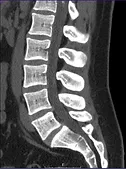
Low Back Pain
What is it?
Low back pain is one of Australia’s most debilitating conditions and can be quite complex when it comes to treating. Low back pain can be split into two main groups; Non Specific or Mechanical Low Back Pain (85-90% of cases) or Specific Low Back Pain (10-15%). Most people who suffer from back pain will fit into this Non-Specific or Mechanical low back pain category and will usually recover within 2-6 weeks, others as long as 3-12 months. There is a recurrence rate of around 50% after having one episode of back pain. Each person who suffers from back pain is different, there is no magic fix or “one approach fits all” when it comes to diagnosing or treating. You can suffer back pain simply by moving wrong, performing repetitive movements that cause strain to your back, poor muscle strength or recruitment and a traumatic event.
So how can we help?
It is important that a thorough assessment is conducted of your back that guides your treatment to provide you with: a graduated return to exercise program, correct advice and education and provide you with suitable manual therapy as befits your specific diagnosis.
Physiotherapy can help you get back to enjoying your daily life without pain. It is about teaching you to exercise smarter, not harder, with a graduated return to exercise and understand what your injury is and how best management of it can lead to good long term outcomes and reduce your recurrence rate.
It is important that you chat to your physiotherapist about ways that you can stay active and how you can get back or stay at work as soon as possible. Simple strategies that you can develop and implement to return to work and stay active have been shown to facilitate good long term outcomes of reducing your back pain and reducing the chance of recurrence.
Important points to remember
Our nervous system is complex and just because we have pain does not mean we necessarily have damage to our bones, muscles, joints or nervous system. Our body can perceive pain as a response to protect an area.
It is essential that you are aware that MRI findings do not correlate with low back pain. If we performed an MRI of most people, we would find a mild disc bulge.
What can you do?
Staying active and incorporating exercises that strengthen our deep core muscles (transverse abdominis, pelvic floor and multifidus), hip stabilisers (glute medius) and legs muscles (glute max, hamstrings, quadriceps) are imperative in helping reduce our risk. A good starting point is aiming for 3 sets of 8-10 repetitions to begin with.
Strength Exercises:
- Hip Hinges (on wall)
- Glute Hamstring Bridge
- Side laying hip abduction
- Supine Toe Taps
- 4 point Diagonals “Super-mans”
- Standing multifidus activators “Growing through your lower back”
Mobility/Stretching Exercises:
- Cat-Camel
- Knee Rocks
- Double Knee to Chest
- Hamstring stretch


